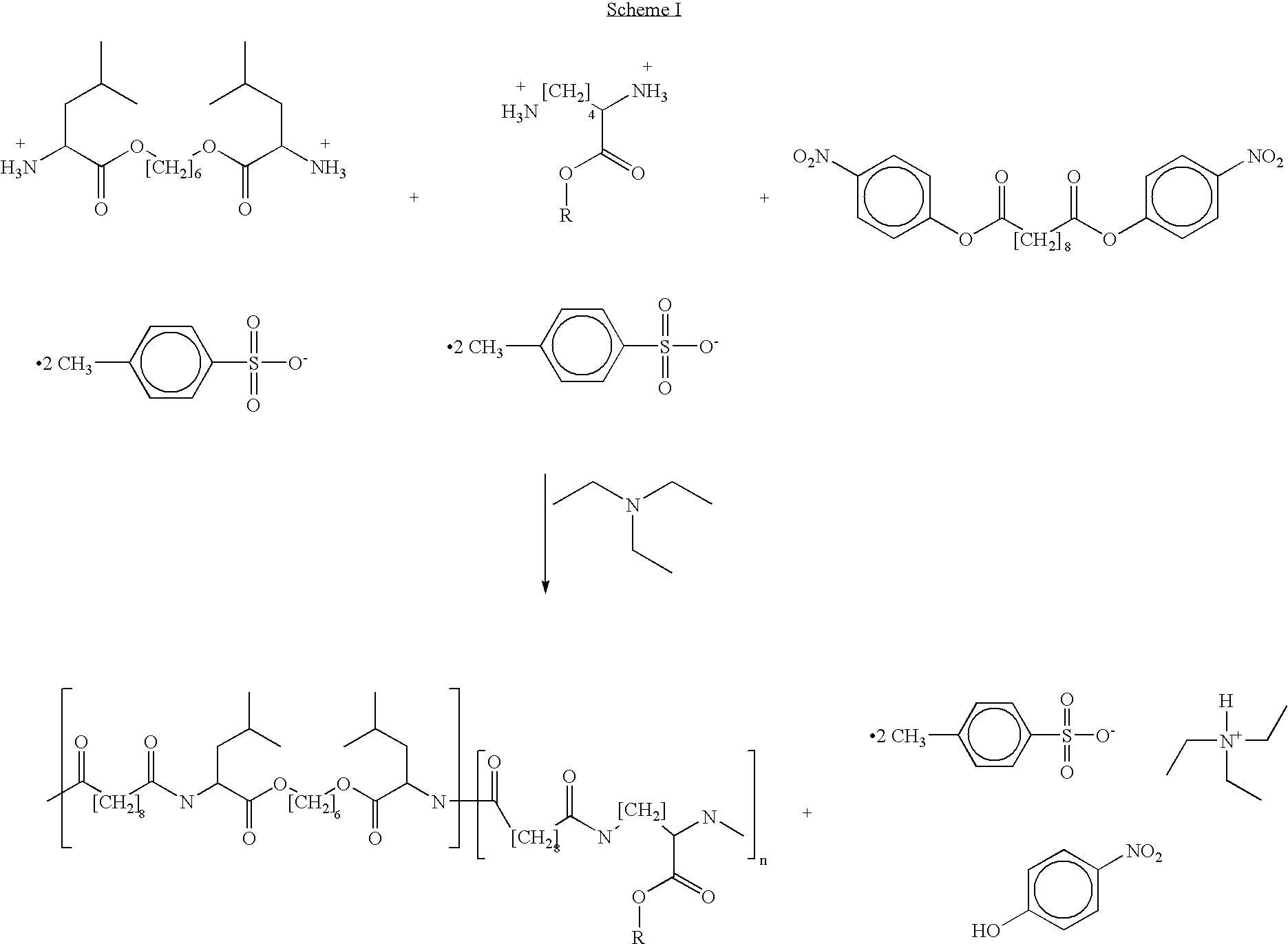Blends of poly(ester amide) polymers
- Summary
- Abstract
- Description
- Claims
- Application Information
AI Technical Summary
Benefits of technology
Problems solved by technology
Method used
Image
Examples
example 1
[0044] Solution blends of PEA-Bz and the PEA of formula 3 can be prepared according to the following procedures. A first composition can be prepared by mixing PEA-Bz and the PEA of formula 3 in a ratio (w / w) of about 1:3 (“PEA-Bz blend”), resulting in an effective Tg of about 32° C. for the PEA-Bz blend, and then adding about 2% (w / w) of the PEA-Bz blend to absolute ethanol. A second composition can be prepared by adding everolimus to the first composition at a drug solid:PEA-Bz blend solution ratio (w / w) of about 1:500, which corresponds to a drug:PEA polymer solids ratio in solution of about 1:10. The above compositions can be agitated to hasten the dissolution process.
example 2
[0045] An everolimus-containing medical article comprised of two layers can be fabricated from the compositions of Example 1 as follows. The second composition of Example 1 is sprayed onto the surface of a bare 12 mm VISION™ stent (Guidant Corp.) and dried to form a coating. An example coating technique comprises spray-coating with a 0.014 fan nozzle, a feed pressure of about 0.2 atm and an atomization pressure of about 1.3 atm; applying about 20 μg of wet coating per pass; drying the coating at about 62° C. for about 10 seconds between passes and baking the coating at about 50° C. for about 1 hour after the final pass to form a dry agent layer. The agent layer can be comprised of about 560 μg of the PEA-Bz blend and about 56 μg of everolimus. A second layer can be applied from the first composition of Example 1 by using the example coating technique. This topcoat layer can contain about 384 μg of the PEA-Bz blend. The total weight of the coating on the stent will be about 1000 μg. ...
example 3
[0046] Solution blends of PEA-TEMPO and the PEA of formula 4B can be prepared according to the following procedures. A first composition, composition 1, can be prepared by mixing PEA-TEMPO and the PEA of formula 4B in a ratio (w / w) of about 1:1 (“PEA-TEMPO blend 1”), resulting in an effective Tg of about 39° C. for the PEA-TEMPO blend 1, and then adding about 2% (w / w) of the PEA-TEMPO blend 1 to absolute ethanol.
[0047] A second composition, composition 2, can be prepared by adding everolimus to the first composition at a solid drug:PEA-TEMPO solution blend ratio (w / w) of about 1:300, which corresponds to a drug:PEA polymer solids ratio in solution of about 1:6. The above compositions can be agitated to hasten the dissolution process.
PUM
| Property | Measurement | Unit |
|---|---|---|
| Temperature | aaaaa | aaaaa |
| Biocompatibility | aaaaa | aaaaa |
| Bioactive | aaaaa | aaaaa |
Abstract
Description
Claims
Application Information
 Login to View More
Login to View More - R&D
- Intellectual Property
- Life Sciences
- Materials
- Tech Scout
- Unparalleled Data Quality
- Higher Quality Content
- 60% Fewer Hallucinations
Browse by: Latest US Patents, China's latest patents, Technical Efficacy Thesaurus, Application Domain, Technology Topic, Popular Technical Reports.
© 2025 PatSnap. All rights reserved.Legal|Privacy policy|Modern Slavery Act Transparency Statement|Sitemap|About US| Contact US: help@patsnap.com

